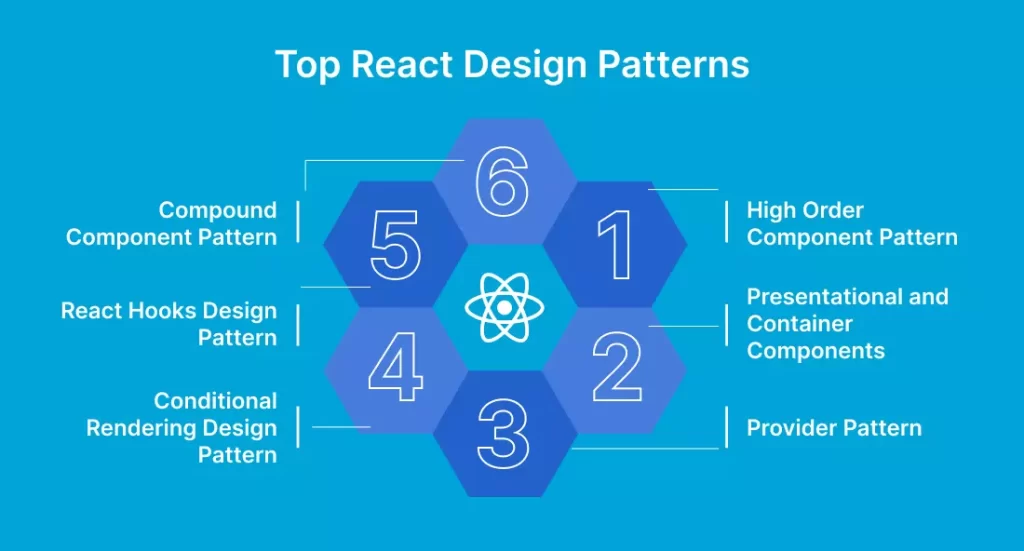- Home
- Our Services
- Mobile App Development
- Full Stack Development
- PHP Development
- eCommerce & CMS Development
- UI/UX & Design Services
Mobile App Developer
Full Stack Development
PHP Development
eCommerce & CMS Development
UI/UX & Design Services
Awards & Recognition






750+
Completed Projects features
20+
Professionals
8+
Years of Experience
- Portfolio
- About Us
Create disruptive business innovations through high-end creativity and world-class alliances.
or call us at
Vacancies for skilled developers and designers are available at all times!
- Hire us

Hire Mobile App Developers

Hire eCommerce & CMS Developers

On-Time Delivery

100% Transparency

One-to-one Communication

Engagement Models
Empower Your Business with Dedicated Developers - Blog
- ITS Training
Graphics Design

250+
Students Trained

8+
Course

150+
Students Placement

20+
Placement Partners
Pick The Right Course To Build Your Career
React Design Patterns: Everything You Should Know
By:
ITS
Category:
React.js development
Introduction:
Do you know an unorganized code in your React application can mount up costs?
According to a study conducted by Stack Overflow, the cost of dealing with “bad code” is as high as $85 billion annually. Besides, it also leads you to issues like technical debt in software development, less scalability, and excess use of resources.
However, we have a proven effective solution – ‘React Design Pattern(s).’ This not only controls your expenditure but also helps you to reform your application. Let’s discuss the significance of React design patterns in this blog.
What are React Design Patterns?
Design Patterns are the pre-built templates that help create websites and mobile applications efficiently. In simple terms, design patterns are the proven solutions to resolve common application problems and development challenges.
React design patterns ensure proficient code organization and reusability. This collectively leads to faster development, uniform design, and fewer errors, ultimately enhancing the overall user experience. Additionally, React design patterns enables you with new functionalities or features without hampering the existing codes.
Using React design patterns smoothens your development process and keeps your app functional for the long run. Thus, we can infer that React design patterns are not just a solution to introduce a new feature and fix issues, but they are like finding your favorite book on a well-organized bookshelf.
Top 6 React Design Patterns in 2023
There are various design patterns in React, but we have picked the most popular ones based on their features, functionality, and demand in the developer community. Below is the list of 6 best React design patterns:

1. High Order Components
The High Order Components (HOC) is a reusable logic within the React components. This popular React design pattern allows your development team to add functionality or features in your React application without changing their original code.
For instance, you have an “Apply now” button in your React application; you want to add color when someone clicks “Apply now.” With HOC, you can add a new color without modifying the original component.
Additionally, HOC helps to keep your code organized and avoid code duplication. In a nutshell, leveraging HOC in your React application development leads to scalable and agile software products.
Code Structure of High Order Components:
import React, { Component } from “react”;
const HigherOrderComponent = (DecoratedComponent) => {
class HOC extends Component {
render() {
return ;
}
}
return HOC;
};
Real-life Use Cases:
- Twitter uses HOC to handle user authentication and authorization.
- Dropbox utilizes HOC for managing file management and sharing functionalities.
- Reddit relies on HOC to manage user interactions and content filtering.
2. Presentational and Container Components
The presentational and container components represent a design pattern approach that helps separate concerns and responsibilities in React applications.
Presentational components are focused on how a user interface looks and feels. The presentational components receive data and callbacks through props.
On the other hand, container components handle tasks like fetching data from servers, managing changes in data, and state management in React applications. Container components ensure that things are working well in the backend.
In addition, a clear separation between presentational and container components can help to identify and rectify errors, which helps to reduce the application’s downtime.
Code Structure of Presentational and Container Components:
import React, { Component } from ‘react’;
import PresentationalComponent from ‘./PresentationalComponent’;
class ContainerComponent extends Component {
constructor(props) {
super(props);
this.state = {
// Initialize state
};
}
componentDidMount() {
// Fetch data or perform initialization logic
}
handleEvent = () => {
// Handle events and update state if needed
};
render() {
return (
{/* Any other JSX */}
);
}
}
export default ContainerComponent;
Real-life Use Cases:
- Facebook employs a state reducer pattern to manage complex interactions within the application.
- Reddit uses a state reducer pattern for handling user interactions in their comment sections.
- Uber employs a state reducer pattern to manage user’s ride requests and bookings.
3. Provider Pattern
As the name suggests, the Provider pattern in React is a software design pattern that shares information with other application parts. For instance, if your website or application requires you to share data like user information, the provider pattern will help you to share that data with the concerned and compliant sections of the application.
In other words, it is the global store for your application’s data. As a result, it helps you to keep every information, such as business information, user preferences, or any other crucial data, in one centralized place.
Code Structure of Provider Pattern:
import React, { createContext} from ‘react’;
// Create a context
const UserContext = createContext({});
function ChildComponent() {
return (
{({ name }) => (
Hello, {name}
)}
);
}
function ParentComponent() {
const name = ‘Alex’;
const value = { name };
return (
)
}
Real-life Use Cases:
- Facebook uses Provider pattern to manage various global state variables across its React application.
- Twitter utilizes Provider pattern data related to user profiles, tweets, and interactions.
- Airbnb uses Provider pattern for booking and reservation-related data.
4. Compound Component Pattern
The compound component pattern enables your development team to create a group of components that work harmoniously for designing the app’s user interface. It is like puzzle pieces, where each component has a particular role, and when you fit them all together, you get a cohesive user interface. Here are some top React UI Component and Libraries you can consider working with.
As a result, the user-friendly interface increases user interaction time with your application. Additionally, compound component patterns can be summarized as parent and child components.
The parent and child components work together to create a complete and functional application. The parent component organizes and handles the child components, and they communicate with each other to make the app perform smoothly.
Code Structure of Compound Component Pattern:
import React from ‘react’;
import CompoundComponentParent from ‘./CompoundComponentParent’;
import { CompoundComponentA, CompoundComponentB } from ‘./CompoundComponents’;
const App = () => {
return (
);
};
export default App;
Real-life Use Cases:
- Netflix uses the compound component pattern to build flexible and interactive components.
- Yelp leverages it to create complex components for displaying reviews.
- GitHub uses compound component pattern to build collaborative components for handling code repositories.
5. React Hooks Components
The latest version of the React 16.8 has changed and transformed how React components are written. React has introduced a set of tools known as “hooks.” These hooks empower your app’s components to address tasks like state management and fetching new information.
In React hooks components, useState hook handles data updates, useEffect hook reminds you about the changes, and UseContext hook shares information among different application parts.
Code Structure of React Hooks Components:
import React from ‘react’;
import MyHooksComponent from ‘./MyHooksComponent’;
const App = () => {
return (
);
};
export default App;
Real-life Use Cases:
- Facebook relies on React hooks to improve its component logic and state management.
- Uber utilizes React hooks to develop dynamic and interactive features in app.
- Spotify leverages the React hooks component to manage the playback functionality of its application.
3 Advanced React Design Patterns
Are you looking for advancement in your React application? Then consider these 3 advanced React design patterns as a Midas touch for your project.
1. Render Props Pattern
The Render Props pattern is top on the list of advanced React.js design patterns. It is a technique by React js for sharing codes and functionality that other components can use to create and display things uniquely.
In short, this pattern is like a helpful tool that can be shared with different parts of your application to develop new functionality. Also, the render props pattern ensures that specific user interface elements remain consistent throughout your app.
Code Structure of Render Props Pattern:
// Child component getting render props
const ChildComponent = (props) => {
return (
{props.render()}
)
}
// Parent component sending render props to the child
const ParentComponent = () => {
return (
{
return (
I am coming from render props
)
}}
/>
)
}
Real-life Use Cases:
- Spotify uses render props pattern to enhance its music player component.
- Yelp employs a render props pattern for review components.
- Twitter leverages the render props pattern for handling interactions like tweet likes or retweets.
2. State Reducer Pattern
This pattern is used in React application to manage state changes utilizing a set of rules. In a State reducer pattern, the state term refers to a behavioral design pattern and includes a function called “reducer,” which manages the state based on different actions.
So, no specific instructions need to be given every time something changes; instead, the reducer guides your application on how things should be done. Also, a state reducer pattern ensures that updated data are organized.
Hence, the state reducer pattern simplifies the testing process, modifies the state without affecting other parts of the application, and decreases unnecessary re-renders, which leads to faster development.
Code Structure of State Reducer Pattern:
src/
|– actions/
| |– actionTypes.js
|– reducers/
| |– counterReducer.js
|– components/
| |– CounterComponent.js
|– App.js
Real-life Use Cases:
- Facebook employs a state reducer pattern to manage complex interactions within the application.
- Reddit uses a state reducer pattern for handling user interactions in their comment sections.
- Uber employs a state reducer pattern to manage user’s ride requests and bookings.
3. Redux Pattern
The redux pattern is a powerful React.js design pattern that stores every information about the changes in application in one place. It is like a book that holds essential app information, which can be accessible across different parts of your React app.
This pattern provides a structured way to handle and update the application-wide state, which helps to make data flow predictable and manageable. Additionally, redux patterns define a predictable set of events and manage the application state in a single source. It is suitable when the project becomes extensive and more complex.
Code Structure of Redux Pattern:
src
|- components
|- services
|- …
|- store
|- actions
|- reducers
|- …
Real-life Use Cases:
- GitHub uses redux pattern to manage its application’s global state related to code repositories, user profiles, and interactions.
- Netflix leverages redux pattern to handle user preferences and content recommendations.
- Dropbox employs redux pattern to manage file storage, sharing, and collaboration features.
Advantages of Using React js Design Patterns
React.js design patterns have various benefits that enhance your overall React application. Let’s find out how different design patterns will advantage your application:
- Reusability
- Maintainability
- Scalability
- Code Organization
- Performance Optimization
How Can React Design Patterns Best Practices Benefit You?
If you want to ensure productivity, efficiency, and consistency in your apps, it is mandatory to follow the best practices for React.js application development. Following these best practices and tips for using React design patterns will make your app more efficient and dynamic; let’s find out how:
- Keep Components Focused and Small
- Utilize Hooks
- Use a Consistent Naming Convention
- Test Components Thoroughly
- Use Immutable Data Structures
Conclusion
As your business strategies evolve, powerful tools and methods are required to empower your applications. React design pattern is a set of proven techniques that impact your application’s performance, user experience, and long-term success.
By embracing React design patterns, your development team can deliver innovative and exceptional results without any bugs. In a nutshell, React.js design pattern is more than a proven solution– it is a strategic asset for your business.
If you want to empower your React application, collaborate with a React.js development company. With years of experience, our experts ensure smooth integration of the best design patterns to develop high-performance application which results in driving growth and delivering exceptional user experiences.

Join them by using our services and grow your business.

“At Inspire Techno Solution , our mission is to continuously innovate the best ways to train the next generation of developers and to transform the way tech education is delivered.”
Related Blogs
React Rendering: Anything & Everything to Know About
The process of React Rendering and how it works. Which React render type suits your
Top 5 React Security Vulnerabilities & Solutions
React is a renowned library for building enticing user interfaces for web and mobile applications.
React Design Patterns: Everything You Should Know
Explore tried-and-tested strategies to develop streamlined, intuitive user interfaces and maintainable applications with React design
